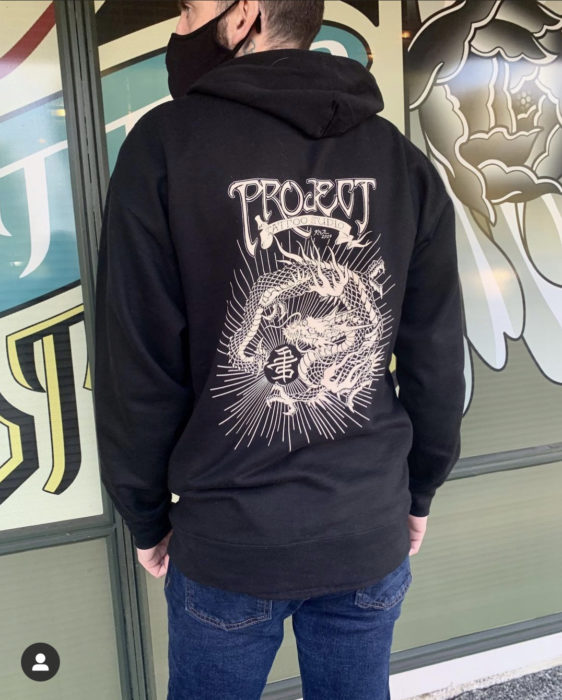Artistic Silk Screen Printing for Limited Edition Prints
Wiki Article
Screen Printing Uncovered: Everything You Required to Understand About Tee and Garment Printing Methods
Screen printing is an interesting approach that integrates art with strategy, using endless possibilities for imagination. Ready to explore the essential aspects that make display printing an art kind?
The Fundamentals of Display Printing: Exactly How It Functions
When you dive right into screen printing, you'll find it's both a scientific research and an art. At its core, screen printing entails producing a pattern, or screen, that allows ink to pass via just in specific areas.Position the screen over the fabric, then make use of a squeegee to press ink through the screen onto the garment. Each step is vital, and mastering them will certainly raise your display printing abilities, changing simple garments right into special, meaningful pieces.
Kinds of Screen Printing Techniques
Once you comprehend the fundamentals of display printing, it's time to explore the different techniques that can elevate your layouts. One preferred approach is standard display printing, where ink is pressed through a stenciled display.An additional option is plastisol printing, understood for its toughness and dazzling shades, making it a preferred for several brands. Experiment with halftone printing to develop gradient effects and complex designs.
Important Tools for Screen Printing
To accomplish stunning results in display printing, having the best tools is fundamental. You'll require a strong display printing structure, which holds the mesh that transfers your layout onto the garment. Next, spend in top notch mops; these are important for using ink evenly throughout the screen.Choosing the Right Inks and Products
When picking inks and materials for display printing, you need to consider the kind of ink that functions ideal for your task. Consider fabric compatibility to ensure your styles look great and last lengthy. Likewise, discover eco-friendly ink alternatives to make your printing procedure a lot more sustainable.Kinds of Screen Inks
Selecting the best screen ink is vital for attaining vibrant, durable prints that meet your project's needs. There are numerous kinds of screen inks to examine. Plastisol ink is popular for its convenience and simplicity of use, giving outstanding shade opacity on dark fabrics. Water-based ink, on the other hand, uses a softer feeling and is green, making it suitable for those aiming to reduce their ecological impact. Discharge inks get rid of dye from the fabric, leading to a soft, classic appearance yet need details handling. Lastly, specialty inks, such as glow-in-the-dark or metal, can include one-of-a-kind effects to your designs. Assess your job needs and select the ink that straightens ideal with your wanted outcome.
Textile Compatibility Considerations
Comprehending fabric compatibility is vital for attaining top notch display prints, particularly considering that different materials react uniquely to different inks. Constantly evaluate your inks on example fabric to assure they adhere appropriately and keep color stability. Additionally, keep in mind that material weight and structure can influence the last result, so picking the appropriate ink and product combo is crucial for your project's success.Eco-Friendly Ink Options
Environmentally friendly inks are ending up being a prominent choice for display printers who want to lessen their ecological effect while preserving high quality. When choosing inks, take into consideration water-based inks, which are less damaging and less complicated to cleanse up compared to traditional solvents.Furthermore, seek inks made from sustainable resources, such as soy or vegetable-based alternatives. By selecting the best inks and materials, you'll not just create spectacular styles but likewise add to a more sustainable printing procedure. Make the switch, and your prints will reflect your dedication to the environment!
Preparing Your Layout for Screen Printing

Submit Style Requirements
To guarantee your layout looks lively and sharp on fabric, you'll require to pay close interest to file style demands for screen printing. Make certain your layout has a transparent history to avoid undesirable white edges on your prints. Maintain shade settings in mind; CMYK is basic for screen printing, so transform your RGB makes appropriately.Shade Separation Strategies
Shade separation is a necessary action in preparing your design for screen printing, and mastering it can considerably improve your print top quality. You'll require to damage your layout into private shades, as each color calls for a separate screen during printing. Begin by identifying all the colors in your design and produce layers for each one. You can utilize software program like Adobe Photoshop or Illustrator to separate and separate shades successfully. Be particular to save each layer as a different documents, commonly in a format like TIFF or PSD. This accuracy not only guarantees exact color depiction however also improves the printing procedure. By taking note of color splitting up, you'll attain dynamic and specialist cause your screen-printed garments.Resolution and Dimension
Achieving the most effective cause screen printing begins with guaranteeing your style has the best resolution and size. Ideally, your art work should be at least 300 DPI (dots per inch) for sharp, clear prints. If you utilize reduced resolution, your last product may look amateur and pixelated.When it comes to dimension, take into consideration the dimensions of your print area. Layout your art work to match the final print size, preferably producing it in why not try these out the real measurements you'll be publishing. This method, you'll stay clear of any unanticipated scaling concerns.
Always examine your style in both vector and raster layouts. Vector graphics can be scaled without losing top quality, making them optimal for screen printing. Preparing properly will ensure your style looks impressive on every garment!
Step-by-Step Screen Printing Refine
Screen printing is a dynamic procedure that allows you to create vivid designs on different surfaces. To obtain begun, you'll require a screen, solution, and your chosen ink.Pour ink onto the screen and utilize a squeegee to press the ink with the stencil onto the material. Raise the screen meticulously and allow the print dry. You've successfully display published your style.
Tips for Effective Display Printing Projects
While you're diving into your screen printing tasks, keep in mind that prep work is key to success. Begin by gathering all your materials-- inks, screens, garments, and mops. A tidy workspace helps avoid unwanted errors, so clean up prior to you start.Following, verify your art work is high-resolution and properly sized for your garment. Check your display for correct exposure and clean it completely to stay clear of smudges. When blending your inks, comply with the supplier's standards to attain the ideal uniformity.
During printing, use even pressure with your squeegee for constant results. Do not hurry; take your time to validate each print fulfills your requirements. After printing, allow your garments dry entirely prior to dealing with or packaging them.
Last but not least, constantly keep a sample of your help future recommendation. This method, you can analyze your progress and enhance your techniques with time. Delighted printing!

Frequently Asked Questions
For how long Does It Require To Establish a Screen Printing Task?
Setting up a display printing work typically takes about thirty minutes to an hour. You'll prepare the screens, mix inks, and adjust the press. The moment differs based upon intricacy and experience, so remain organized!Can I Publish on Various Fabric Enters Using the Very Same Strategy?
Yes, you can print on different fabric kinds utilizing the very same technique, but you'll need to adjust your inks and settings. Some materials soak up ink differently, so experimenting guarantees the finest results for each product.What Prevail Errors to Avoid in Display Printing?
When display printing, prevent common errors like utilizing the incorrect ink, disregarding appropriate exposure times, or avoiding pre-press checks. Constantly evaluate your setup and preserve clean displays to guarantee top quality results each time.How Can I Effectively Tidy and Keep My Display Printing Equipment?
To properly tidy and preserve your screen printing tools, you need to frequently clean screens you could try this out with ideal solvents, check mops for wear, and ensure all tools are kept dust-free and dry. Uniformity boosts and prevents expensive repairs efficiency.Is Display Printing Ecologically Pleasant Contrasted to Other Approaches?
Display printing can be much more ecologically pleasant than various other approaches, specifically if you utilize water-based inks and eco-conscious products. By selecting lasting materials and methods, you decrease waste and reduce your effect on the world.Display Printing Uncovered: Every Little Thing You Need to Know Concerning Tee Shirt and Garment Printing Techniques
At its core, display printing involves developing a stencil, or display, that enables ink to pass via only in certain locations. Setting the display over the material, after that use a squeegee to push ink through the display onto the garment. One popular technique is standard display printing, where ink is pressed via a stenciled screen.When selecting inks and materials for display printing, you need to take right into account the kind of ink that works finest for your job.
Report this wiki page